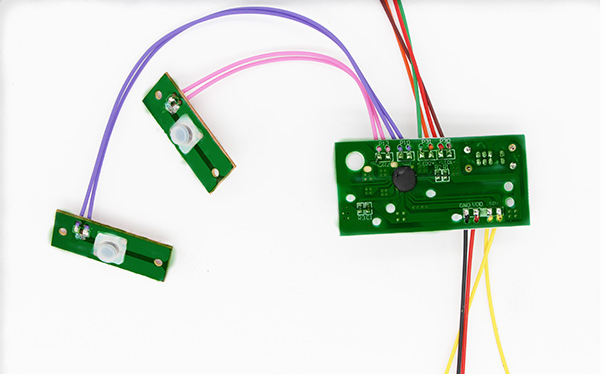At present, 100% inspections are carried out on flexible printed circuit boards FPC. Of course, in addition to the FPC disconnection and short circuit must be checked and there are inspection equipment, there are also many other items for visual inspection. General lines can be inspected manually or with a magnifying glass magnified 2 to 3 times, but a high-power microscope should be used to inspect high-density lines. Lines with a size of about 100μm should be inspected with a magnifying glass of 5-10 times, lines with a size of 50-100μm should be inspected with a magnifying glass of 10-20 times, and lines below 50μm should be inspected with a stereo microscope with a magnification of 20 times or more. It is not that the higher the magnification of the microscope, the better. To be able to perform inspections efficiently, a wide field of view is also very important. Although it is a high magnification, the inspection efficiency cannot be improved without the electronic image magnification function.
Double-sided FPC
The use of an automatic optical inspection instrument (AOI, AutomaTIc OpTIcal InspecTIon) to inspect the defects of flexible printed boards is still only a part of mass production. The automatic optical inspection instrument has been used in the tape reel process, but the automatic optical inspection instrument can only inspect the defects of the circuit, and can only partially replace the inspector, and the flexible circuit is different from the usual digital circuit, and the conventional automatic optical inspection instrument cannot be used., Must also attach a special program. It is difficult to adapt to the rapid development of miniaturized circuits.

With the high density of circuits, the magnification of the microscope used will increase accordingly, and the inspection time per unit area will also be extended. The proportion of man-hours required for the inspection of flexible printed boards is not small. With the further development of circuit density, this The proportion will increase further. If the defect rate drops, the inspection speed will increase, but the density of the circuit continues to move forward. From the inspection standpoint, the pass rate of the precision pattern circuit will not increase significantly.
All inspection items of the flexible printed circuit board are not carried out in the final process, especially the defects of the circuit and coverage are better to be inspected in the process. The reality is that the inspection in the process cannot completely replace the final inspection, but it still has a certain effect on improving the efficiency of the entire production.
FPC reinforced board processing
Adhesives are generally film-like, and the two sides are protected by a release film. The adhesive film with one side of the release film is attached to the reinforcement board, and then the shape and hole are processed, and then it is laminated with the flexible printed board by the hot roll lamination method. The material used is different, the dimensional accuracy of the shape is also different. The rigid board of epoxy glass cloth laminate and paper-based phenolic laminate can be processed by CNC drilling and milling machines or molds. Polyester and polyimide films can also be processed with a knife mold for simple shape processing. Generally, the film-like reinforcing plate does not need to be processed with fine holes, and can be processed by CNC drilling and molds. If it can be processed or automated in a relatively short period of time, it will reduce manufacturing costs. Aligning and positioning the reinforcement board on the flexible printed circuit board with the processed shape and holes, this process is difficult to automate, and it accounts for a large proportion of the processing cost, because this operation has to be carried out manually, if A flexible printed board requires multiple reinforced boards of different materials, which increases the cost. On the contrary, if the design is simple or the easy-to-operate jig is used, the production efficiency will be significantly improved, thereby reducing the cost. All PCB factories are working hard to improve this process, but still need personnel with certain production skills to operate.
There are pressure-sensitive (PSA) and thermosetting types for the bonding of reinforced boards, and the labor required for processing is also very different. Using the pressure-sensitive type is very simple, tear off the release film on the pressure-sensitive type, and after aligning with the position on the flexible printed board, it can be pressurized in a short time, even as long as it is pressed by hand. When a certain bonding strength is required, a simple press can be applied for a few seconds or through a hot press roll.
Using thermosetting adhesives is not so simple. Generally, a pressure of 3~5MPa (30~50kg/cm.) and a high temperature of 160~180 degree Celsius are required, and it must be pressed for 30~60min. In order to prevent the flexible printed board from being affected by stress, the pressure on the reinforced board must be uniform. If the reinforced board is simply pressurized, the end of the reinforced board may be broken due to the stress.
In addition, the double-sided adhesive film with release film on both sides can be used to bond flexible printed boards, f lexible printed boards, or flexible printed boards with rigid printed boards, which is equivalent to half of rigid printed boards. The solid sheet, its processing and curing process is the same as the laminating process of the reinforced board.